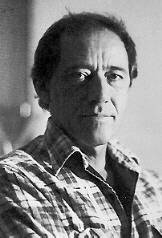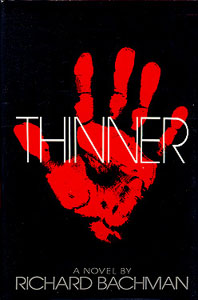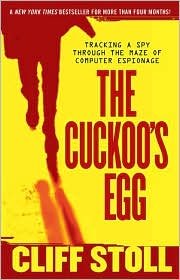Whenever people wax nostalgic around me - always a big mistake - I bring up premodern dentistry, medicine, plumbing, pest control, and law enforcement. Let's not tackle the horrors of the first four, but stick to law and order. There wasn't a lot of it. For one thing, of course, there weren't any police per se, before our own Gabriel Nicolas de la Reynie became the first Lieutenant General of Police in Paris in 1667. (The London bobbies were established in 1829.) This didn't mean that there was a whole police force in Paris: there were some "police chiefs", constables, archers, and men of the watch, but the main staff was an intricate web of informers who would cheerfully tell anything they heard for money.
 |
| M. de la Reynie |
Anyway, back in Renaissance and Enlightenment France (say, the 1500 through very late 1700's), most judicial proceedings were presided over by either your seigneur (lord) if you were a peasant, or a judge/panel of judges (if it was a question of a felony), or a chambre ardent (if you were suspected of witchcraft), or the King, if you were sufficiently noble. Punishments varied:
| The Bastille |
- Banishment, exile, monasteries/convents for the wealthy and the nobility. (It helped if you could flee the country - like Olympe de Soissons - before they came after you.)
- Imprisonment in the Bastille or another old castle with damp, insufficiently lit cellars for the wealthy or too offending nobility (just a reminder: a noble family could ask the king for a lettre de cachet, which would imprison the recalcitrant relative for life). Also, the occasional political prisoner - Voltaire was sent to the Bastille three times, twice for his incendiary writings and the last time because he challenged the Chevalier de Rohan to a duel. Voltaire was a peasant, Rohan was a nobleman, a lettre de cachet was given, and I for one am amazed that he ever got out.
- Burning for witches.
- Flogging, branding, more torture and/or hanging for the lower classes.
- The galleys (for all classes).
And then there were the galleys. Today there is a growing issue with privatized prisons (I hope), in which prisons are run for profit and the prisoners are turned into slave labor ($0.25/hour is the norm; $3.25/hour is considered good wages), which could lead to the question: are people being arrested and convicted because they are really guilty, or because the prison needs to be full? (After all, standard private prison contracts require a certain level of occupancy, no matter what the actual crime rate is, so even if crime goes down, people still need to be arrested...) Back in the 16th, 17th and 18th centuries, the question was whether people were condemned to the galleys because they were guilty or because more oarsmen were needed to man the fighting ships of the Mediterranean. Louis XIV ordered the courts to sentence men to the galleys as often as possible, and, instead of the death penalty, send them to the galleys for life. And so it was done.
 |
| The Reale - a galley ship of Louis XIV |
The galley slaves - galériens - were made up of Turks (who really WERE slaves, bought by the French government from the Barbary pirates and other sources), military deserters, salt smugglers, plain criminals (including nobility - the Chevalier de Margaillet, for example, was sent there for raping his niece, who by the way, must have had connections of her own to get a conviction), and Huguenots (i.e., Protestants, which was illegal in 17th and 18th century France).
 Galley slaves had nothing. They were branded GAL for galérien. Their heads were shaved for lice, and they were given only canvas drawers and a red hat. They lived in the open because there was literally nowhere else for them to go. They lived on biscuit and bean soup - and, being France, when they were at sea were given a cup and a half of wine day. They slept and ate and defecated where they sat (although I suppose if they were the oarsman closest to the side of the boat, they went over the side). They never washed. Five men chained to an 18-foot oar, pulling it with all their might - for life. A Huguenot galérien said that "One would not think it was possible to keep it up for half an hour, and yet [thanks to the whip] I have rowed full out for twenty-four hours without pausing for a single moment." (Lewis, p. 220) Such appalling labor only happened during a heated battle - and during a battle anyone who died, or even fainted, was cut loose and flung overboard.
Galley slaves had nothing. They were branded GAL for galérien. Their heads were shaved for lice, and they were given only canvas drawers and a red hat. They lived in the open because there was literally nowhere else for them to go. They lived on biscuit and bean soup - and, being France, when they were at sea were given a cup and a half of wine day. They slept and ate and defecated where they sat (although I suppose if they were the oarsman closest to the side of the boat, they went over the side). They never washed. Five men chained to an 18-foot oar, pulling it with all their might - for life. A Huguenot galérien said that "One would not think it was possible to keep it up for half an hour, and yet [thanks to the whip] I have rowed full out for twenty-four hours without pausing for a single moment." (Lewis, p. 220) Such appalling labor only happened during a heated battle - and during a battle anyone who died, or even fainted, was cut loose and flung overboard.  |
| 19th century Marseille |
The wheel and the stake, beheadings and burnings were all much more public, but the the two secret hells, the fates worse than death, were the lettre de cachet and sentencing to the galleys. Either way, you got to live - for a while - but probably spent that life wondering why. Some great literature has been written around hell, though, and its aftermath: "The Count of Monte Cristo", "Les Miserables", "A Tale of Two Cities", all tales of escape, all tales of new life - but the Count, Jean Valjean, Dr. Manette are all marked, changed forever. But perhaps the book closest to the spirit of the galleys and the dungeons is Alexandr Solzhenitsyn's "One Day in the Life of Ivan Denisovich" - where one sentence only leads to another, and when he counts the days of his sentence, he has to add extras for the leap years...


























